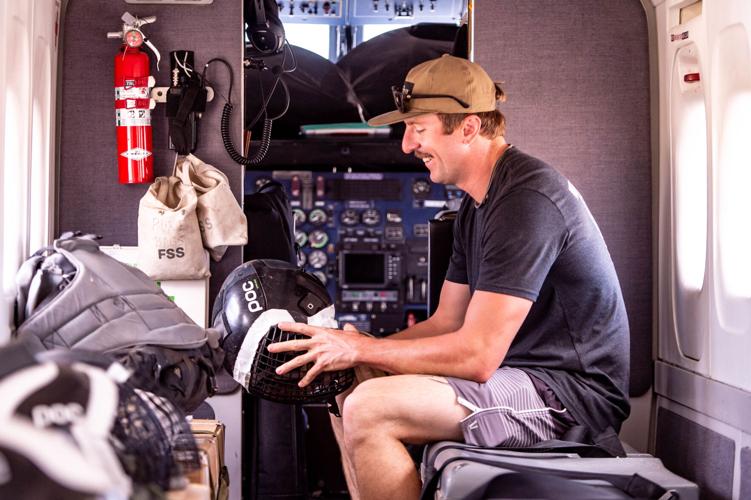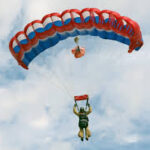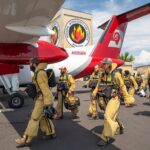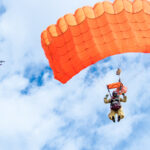
By DENNIS WEBB Dennis.Webb@gjsentinel.com
Nick Hampe has worked seven years in wildland firefighting, and remembers while working on an engine crew in Montana seeing smokejumpers arriving on a fire by air.
“I was just kind of sold on maybe trying to do that at some point,” he remembers.
Now he’s living his dream. He was one of several smokejumpers who were stationed this week out of the Grand Junction Air Center, and a number, like him, are in their rookie years as jumpers.
“It’s pretty awesome. I’ve been wanting to do this for a long time. I finally got it,” he said.
The smokejumpers in Grand Junction this week generally are based out of Boise, Idaho, though Hampe said he’s originally from Denver. Fellow rookie Matt Bruns described spending about five or six weeks earlier this year learning the fundamentals of parachuting.
Hampe said of that training, “It’s pretty military-style, a lot of mental, physical, strenuous stuff.”
He described his first jump in training as being a little nerve-wracking. But as he and Max Kratochvil, another smokejumper rookie, demonstrated the jumping procedure from the parked smokejumper plane at the air center, Hampe said he doesn’t think anyone who has gone through training in Boise ever has bailed on making their first jump once they were positioned in the door about to jump.

Smokejumper helmets are caged like a hockey goaltender’s mask, to allow enough visibility and limit fogging of a visor, while also blocking tree limbs and brush from getting in the eyes and faces of firefighters. Some smokejumpers also use hockey pads to provide extra cushioning under their jumpsuit, while others make use of motocross gear like chest plates for extra protection. Larry Robinson / The Daily Sentinel
Now Hampe and Kratochvil are both up to about 40 jumps or more, many of them practice jumps but some on fires.
“I still get pretty nervous,” Kratochvil said. “I think it’s good to be nervous.”
“You just kind of compartmentalize everything,” Hampe said as he and Kratochvil ran through the list of procedures and safety checks that occur in the moments that lead up to departing the plane.
Smokejumpers jump while loaded down with 80 pounds or more of gear. This includes protective clothing to help guard them from things such as tree branches they might encounter while landing, a backup parachute should the primary one malfunction, water, food, a radio and fire shelter. Other gear includes a rope for rappelling down from a tree if they get snagged in one while trying to land.
Separately, parachute-equipped cargo that goes along with them on the plane and is dropped to them once they’re on the ground includes things such as firefighting tools, sleeping bags and additional food and water intended to last smokejumpers for a couple of days.
“We have that all prepackaged and ready to go,” Bruns said, pointing to cargo stacked in a smokejumpers’ facility at the air center.
Hampe said Tuesday he had recently jumped on two small, lightning-caused fires in the region, one outside Grand Junction and another near Dinosaur National Monument. He said he and a fellow smokejumper were able to take care of the fires on their own.
“It’s the quickest delivery to a fire,” he said of smokejumping. “That’s kind of our M.O., be there quick.”
He said the job is hard, but has perks just as seeing the scenery from smokejumping planes.
“We get the best views in the world. We’ve got a pretty sweet gig here,” he said.
SOURCE: https://www.gjsentinel.com/news/subscriber_exclusives/smokejumping-the-quickest-delivery-to-a-fire/article_da9cd290-2d76-11ee-811b-ef5095db5f87.html






